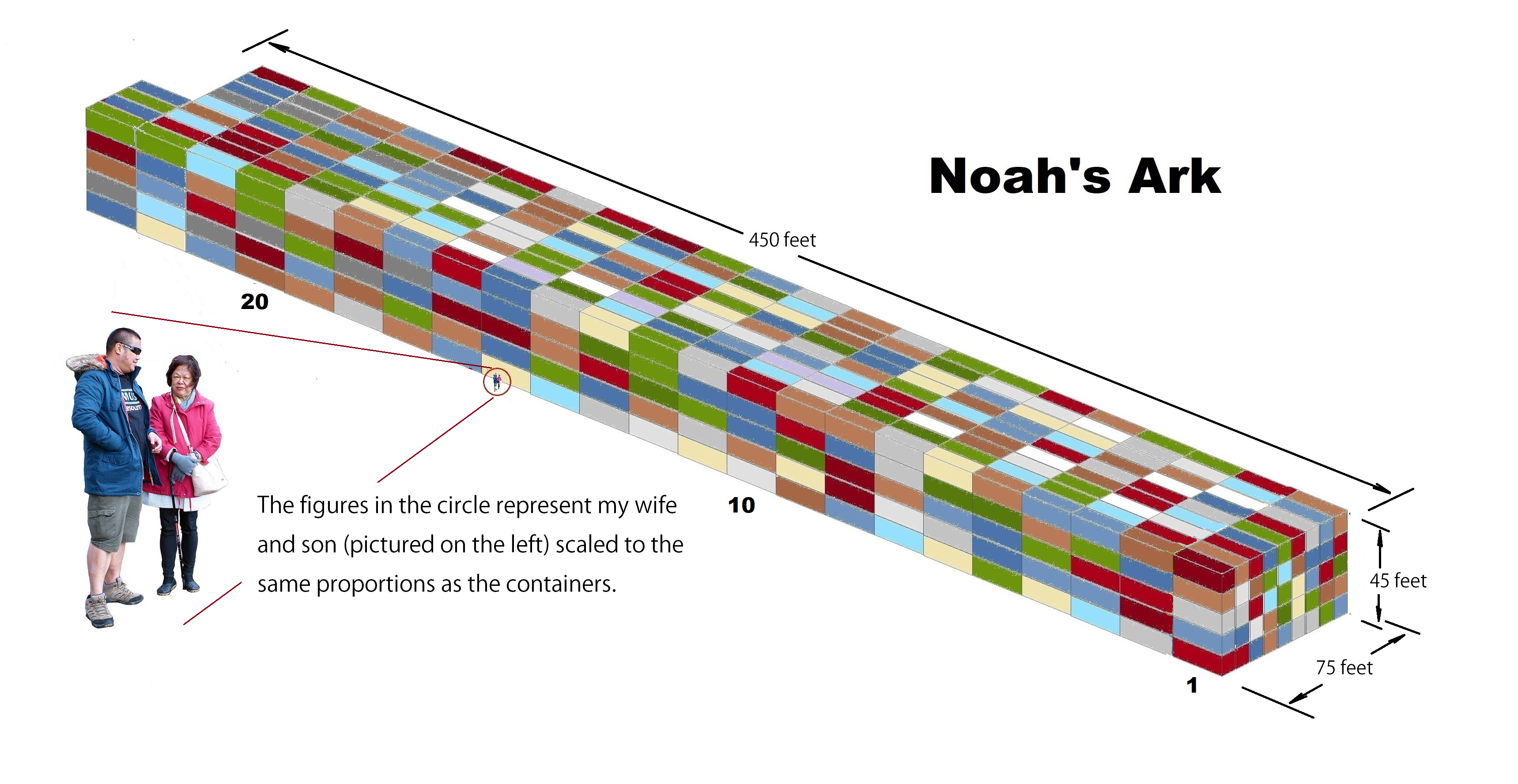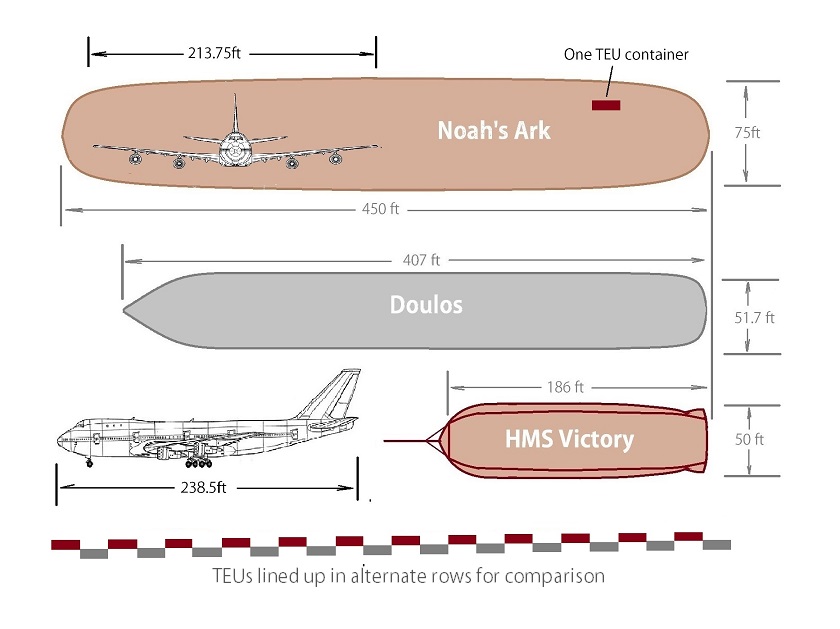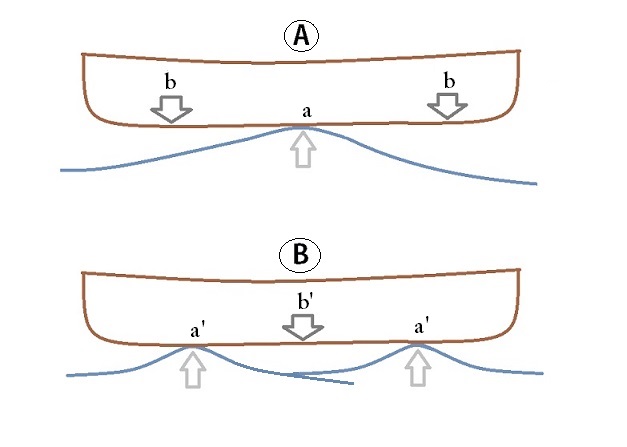

The image above is typical of most Christians' conception of Noah's Ark. You can see a rhino looking over the side of the ark on its starboard side and an elephant on its port side. We take this perception of what the ark really was like so much for granted that we don't even give it a thought if this is correct. We are in for a surprise when we take a closer look.
Gen 6:15 gives us the overall dimensions of the ark Noah was to build: "The ark is to be 450 feet long, 75 feet wide and 45 feet high." This gives a volume, in metric, of 49,766.4 cubic meters.
What does this mean? Let us compare these dimensions to what is referred to in the logistic business as the TEU, which stands for "twenty-foot equivalent unit." This is the typical containers you see transporting supplies to the supermarkets and factories. These containers are 20 feet long, 8 feet wide and 9½ feet high, with an volume of about 38.5 cubic meters.

Noah's ark was, therefore, equivalent to about 1,120 TEU containers. Lined up in roughly the same proportions of Noah's ark's dimensions, these containers would look like this:

This is a surprise, isn't it? But what significance is there in this new perception of the ark?
First a structure of this size requires (required) a huge amount of material to build. Whether Noah was also an extremely wealthy man apart from being a righteous one, the Ark needed a lot of money for its construction. It also required a huge workforce of skilled labour. We conclude, therefore, the pictures we see in Sunday School resources of only Noah and his three sons slaving away are, at best, caricatures. It also required great engineering ingenuity. Building a floating structure to float on a river, with its calm and relatively still waters is easy enough. Building a ship this size that would be subjected to the buffeting of storms, such as the Ark was, was an entirely different matter. Though ships have been built of wood for centuries, it is not a very efficient material. To make a an ark able to sustain the enormous stresses presented by the fact that floating in water is relatively stressless, floating on water is extremely stressful on any structure. In fact no wooden ship of a similar size have ever been recorded or reporded in maritime history. Even building a steel ship capable of handling just 500 TEU could not take place until the late 1950s; in fact, Noah's ark was roughly the size of an early 1970s' container ship. The ancient ship most likely to come anywhere near the size of Noah's Ark is Zheng He's command ship, which is reported to be 127m long (417 feet) but broader, at 42 m (138 feet). Even then, many historians question the veracity of these dimensions. The next to make the record is Horatio Nelson's flagship at the Battle of Trafalgar, the HMS Victory, at 186 feet (on deck) and 50 feet wide. Even when English ship builders, emboldened with their mastery of iron, dared begin with steamers of only about 125 meters (approx. 420 feet). To provide another view to give us a better sense of what Noah's ark represents here it is compared to the Doulos of Operation Mobilization, and the HMS Victory (and, since most of us are more familiar with aeroplanes than ships, a Boeing 747; the length of the Airbus a380 is about the same as the 747 but is wider by about 48 feet):

Let us look at a wooden ship at sea to understand what building the Ark implied. A ship in rough weather faces two counteracting problems that constantly threatens to break it apart.

When the ship is lifted up on a wave (Diagram A), it is supported only at one point (a) of its keel (as the 'backbone' of a ship is called). The weight of the entire ship now weighs down on two points (b) on either side of the ship, threatening to break it apart at a. When the ship is caught between two waves (Diagram B), the opposite happens. It is now supported at two points (a') but the entire weight of the ship now rests threatens to break it apart at b'. And we have not even began to consider the stresses acting on the sides of the ship as it rolls from side to side in the storm. All in all, therefore, Noah's Ark was a humongous ship, and a gift of two miracles: the miracle of resources and the miracle of sustainence in the most severe of circumstances.

Download Power Point of images.

Low Chai Hok
©Alberith, 2020
101220lch